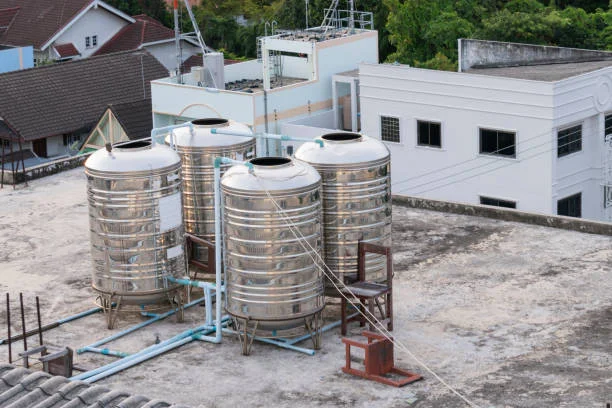Water is essential to life, and for many households and businesses, water storage tanks provide a crucial way to store water safely for everyday use. Whether you’re storing rainwater, bore water, or municipal water, ensuring that your water tank remains clean and free from contaminants is vital for health and safety. One of the most common questions tank owners have is: how often should water storage tanks be cleaned?
The answer depends on several factors, including the type of tank, its usage, the source of water, and the environment it’s in. However, regular maintenance and cleaning should not be overlooked, as it ensures the water remains safe for use and helps extend the lifespan of your tank.
Explore more topics tailored to spark your curiosity.
The Importance of Regular Tank Cleaning
Over time, sediment, debris, algae, and even bacteria can build up in water storage tanks. These contaminants can degrade water quality, cause unpleasant odours and tastes, and potentially pose health risks, especially if the water is used for drinking or cooking. Leaves, insects, and animal droppings can also enter the tank, particularly in rainwater harvesting systems.
Regular cleaning ensures:
- Water quality is maintained, making it safe for consumption and general use.
- Tank components such as pumps, filters, and pipes operate efficiently and aren’t damaged by sediment buildup.
- The longevity of your tank is preserved, reducing the likelihood of corrosion or biofilm formation.
- Water monitoring devices, like tank water level indicators, remain accurate and functional.
Neglecting tank cleaning can lead to serious consequences like contamination, damage to equipment, or even the need for complete tank replacement.
How Often Should You Clean Your Tank?
While there’s no universal answer, most experts recommend cleaning your water storage tank at least once every 6 to 12 months. However, several factors might influence how frequently your tank should be cleaned:
- Water Source: Rainwater tanks may require more frequent cleaning due to potential debris entering from gutters and roofs. Municipal water tanks may stay cleaner longer but should still be inspected regularly.
- Tank Usage: Tanks used for drinking water should be cleaned more frequently than those used solely for irrigation or industrial purposes.
- Environmental Factors: If your tank is located in an area with high dust, bird activity, or tree coverage, contaminants may accumulate more quickly.
- Filtration System Quality: Tanks with high-quality filters and first-flush diverters often stay cleaner longer.
A general guideline:
- Drinking water tanks: Every 6 months
- Rainwater tanks with filters: Every 12 months
- Non-potable water tanks: Every 12–24 months, depending on usage
Signs Your Water Storage Tank Needs Cleaning
Even if your tank is within the recommended cleaning interval, certain signs may indicate it’s time for a cleaning:
- Unpleasant odor or taste in the water
- Discoloration or cloudy water
- Presence of sediment or slime at the bottom of the tank
- Blocked pipes or slow water flow
- Algae or mold growth inside the tank
- Reduced water pressure or pump issues
Paying attention to these symptoms can prevent more serious issues from developing.
Step-by-Step Guide to Cleaning Your Water Storage Tank
If you decide to clean your tank yourself, follow these basic steps. Note that larger or more complex tanks may require professional servicing.
Step 1: Prepare and Empty the Tank
- Turn off the pump and close the inlet/outlet valves.
- Drain the tank completely using a suitable outlet or pump.
- Remove any remaining water with buckets or wet vacuums.
Step 2: Scrub the Interior
- Using a long-handled brush or pressure washer, scrub the walls and base of the tank to remove biofilm, sediment, and algae.
- Avoid damaging internal surfaces—use soft bristles for plastic or fiberglass tanks.
Step 3: Rinse Thoroughly
- Rinse the tank with clean water to flush out debris loosened during scrubbing.
- Use a hose or clean water bucket, ensuring all residue is removed.
Step 4: Disinfect (Optional but Recommended)
- Use a non-toxic disinfectant or diluted bleach solution (1 part household bleach to 100 parts water) to sanitize internal surfaces.
- Let it sit for 1–2 hours, then rinse thoroughly with clean water until all traces of disinfectant are gone.
Step 5: Inspect Components
- Check pipes, valves, filters, and tank water level indicators for damage or buildup.
- Clean or replace any clogged filters and ensure your water level monitor is functioning accurately.
Step 6: Refill the Tank
- Once the tank is clean and all components are in good condition, refill it with clean water.
The Role of Tank Water Level Indicators
While cleaning is critical, monitoring your water levels is equally important. Tank water level indicators help you:
- Track usage patterns so you can schedule cleanings when the tank is nearly empty.
- Detect leaks or overflows, which might suggest contamination or mechanical problems.
- Plan water use efficiently, especially in areas prone to drought or water restrictions.
Modern level indicators come in digital, mechanical, or smart sensor varieties – some even connect to apps for real-time monitoring. Keeping your tank clean ensures these indicators remain accurate, preventing malfunctions caused by dirt or sediment.
Conclusion
Regular cleaning of your water storage tank is not just a good habit; it’s essential for maintaining water quality, system efficiency, and health safety. While most tanks should be cleaned every 6 to 12 months, the exact frequency depends on your specific setup and environment.
Being proactive by watching for signs of contamination, using proper equipment like water level indicators, and either cleaning the tank yourself or hiring professionals will ensure your water stays clean and your system performs at its best for years to come.
Frequently Asked Questions
Can I clean my water storage tank myself?
Yes, if you have a small or medium-sized tank and access to the right tools, you can clean your tank yourself. Make sure to follow safety precautions, especially if you’re using a ladder or handling disinfectants. However, for large or underground tanks, hiring a professional cleaning service may be safer and more effective.
What happens if I don’t clean my water storage tank regularly?
Failing to clean your tank can lead to:
- Contaminated water that poses health risks
- Buildup of sediment and algae, reducing water quality
- Clogged pipes and damaged pumps
- Shorter lifespan of your tank and its components
- Inaccurate readings from your water level indicators
Regular cleaning is a small investment for long-term safety and performance.
Should I use chemicals to clean my water storage tank?
Using mild, food-safe disinfectants like diluted household bleach is generally acceptable, especially if the tank is used for drinking water. Always rinse thoroughly to remove any residue. Avoid harsh chemicals that could damage the tank or pose health risks. When in doubt, consult a professional or refer to the manufacturer’s guidelines for Water Storage Tanks.
By incorporating routine cleaning and monitoring your water storage tank with modern tools like level indicators, you’ll be well-equipped to enjoy clean, safe water and peace of mind all year round.
Wisdom grows when you explore related thoughts—discover more at 2A Magazine







